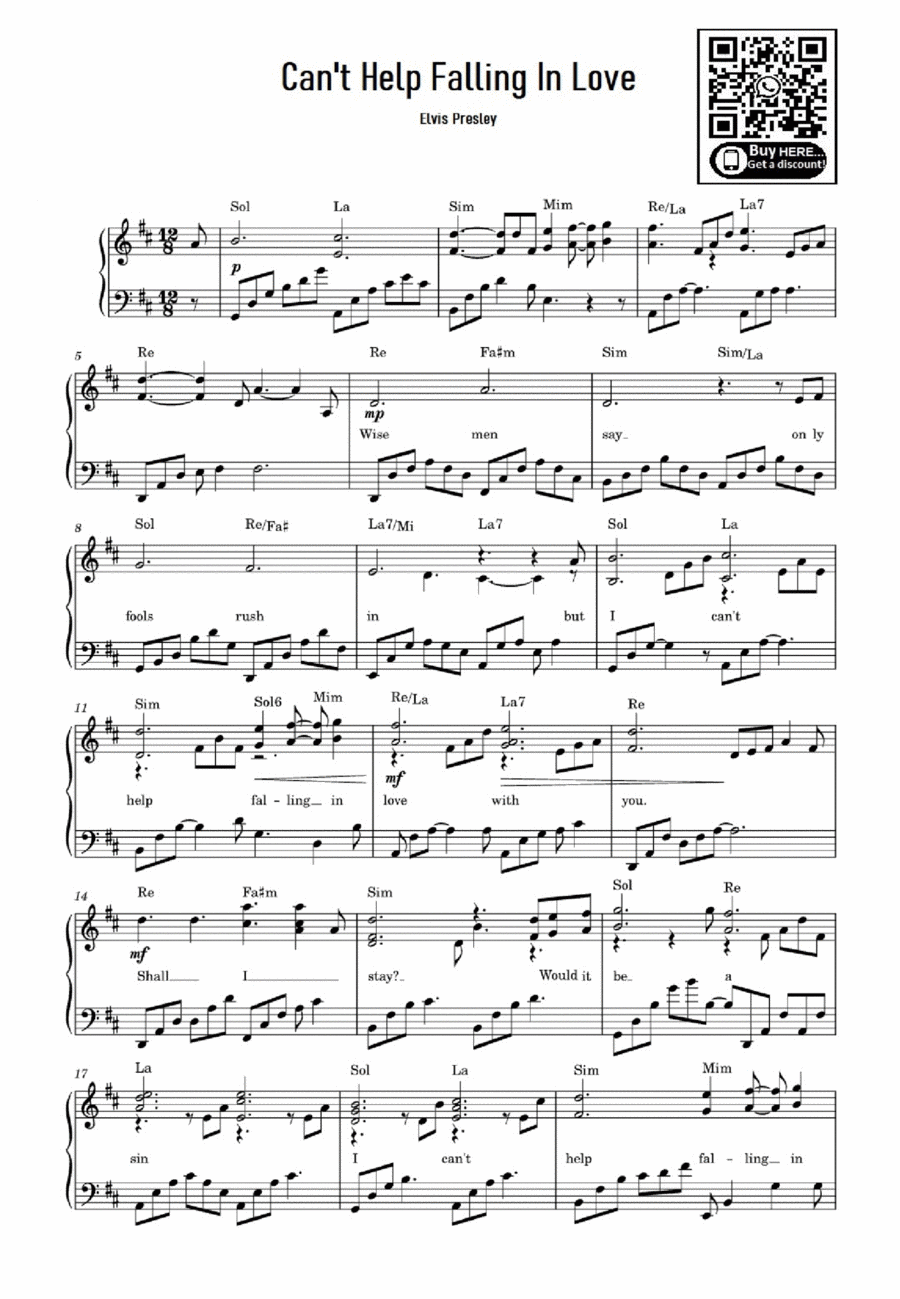Easy Piano - Level 2 - Digital Download SKU: A0.1423125 By Elvis Presley. By George David Weiss, Hugo Peretti, and Luigi Creatore. Arranged by eduardo. Pop,Rock,Romantic Period. Score. 3 pages. O_Talentoso #1004458. Published by O_Talentoso (A0.1423125). Elvis Presley-Can't Help Falling In Love (Piano Cover) + SHEET Partitura Intermediary 2.
